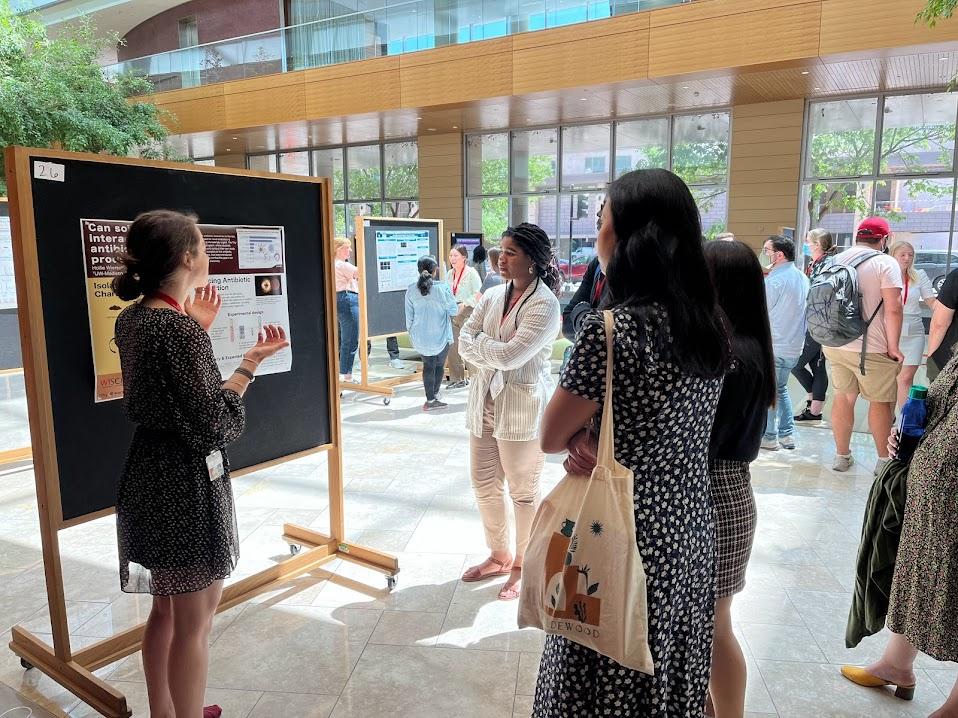Tiny Earth conducts research aiming to discover new bacteria that could be more effective in combating illnesses than current antibiotics. The organization trains university instructors at institutions across the U.S., who then teach classes and get students involved with sample collection and research.
Started just 11 years ago by Director of the Wisconsin Institute for Discovery Jo Handelsman, Tiny Earth has since expanded worldwide to over 700 participating instructors teaching the course and over 14,000 students enrolled each year.
Tiny Earth Outreach Specialist Trang Tran said the first course was created by Handelsman in 2012 and called “Microbes to Molecules.”
“Within the same year, [Handelsman] had trained several instructors, the next year several instructors from different institutions across the U.S., and then it just kept growing bigger and bigger from there,” Tran said.
Curriculum committee chair for Tiny Earth and professor at Sacramento State Enid González-Orta said students enrolled in Tiny Earth courses collect and study soil samples from their local area, hoping to find bacterial species helpful to research. They then upload the data collected from these samples into the Tiny Earth database, which the entire Tiny Earth network shares.
González-Orta said students at any level — high school, master’s and even non-biology majors — can enroll in the course as long as it’s offered where they are.
Tiny Earth partner instructors are professors at universities worldwide who are trained by Tiny Earth to teach the Tiny Earth course. The WID contains the Tiny Earth Chemistry Hub and Headquarters, which González-Orta said collaborates with Tiny Earth partner instructors.
In a full-time research lab, TECH takes some of the strains of antibiotic-producing bacteria to study them and their potential. This allows them to work with the bacteria farther than what time in class allows, González-Orta said.
In TECH’s current collection, there are over 3,100 total bacteria isolates from soil samples.
Tiny Earth expanded over the past decade, and changes to course structure have accompanied this growth. One of the biggest changes was increased organization, Tran said. Other updates included a written textbook and modifications to training and curriculum.
Tran said one major change in the curriculum was the inclusion of anti-racism education.
“During the social unrest of 2020, after the death of George Floyd, we made pretty big strides to include anti-racism and all of those other AJEDI (anti-racist, just, equitable, diverse and inclusive) principles in our curriculum,” Tran said.
AJEDI is the set of principles Tiny Earth uses to ensure they work against historical oppression systems, specifically in STEM and higher education, Tran said. Handelsman and associated researchers published a paper in 2022 explaining the purpose and importance of AJEDI in science.
For Tiny Earth, dismantling historically oppressive systems is not considered something separate from STEM — it is intertwined, González-Orta said.
“Just making it [AJEDI] part of the curriculum … [shows] it’s important as not something ‘other’ but as something ‘and,’” González-Orta said. “Just as we would teach a student a particular technique or particular data analysis … we include ways to address AJEDI principles in the same way.”
Additionally, the organization has also created course activities promoting the persistence of diverse students in STEM, Tran said. Along with teaching the principles of AJEDI in classrooms, Tiny Earth strives to make its courses as accessible to as wide a range of students as possible.
One way they approached this problem was by developing online courses, Tran said. Created out of necessity during the pandemic, the Tiny Earth course is now taught in multiple formats.
“We have a really awesome community of instructors who really care about the students and really care about this coursework, who committed the curriculum completely online, and now we have accessible, adaptable curriculum that can be taught in person, hybrid or online,” Tran said.
Another way Tiny Earth ensures the accessibility of the course is by keeping it at a low cost for students and instructors. They make sure to include universities across the U.S. with different demographics and resource availability than bigger research universities, and they host a summer research course specifically aimed at students in two-year universities and tribal colleges, Tran said.
Tran said Handelsman and other Tiny Earth network members published a book on how to teach science in 2007, and have recently begun using it as a framework to teach the course.
“When we think about interactions with the soil … all of us, all of our cultures, have some connection to the soil,” González-Orta said. “It’s important to acknowledge that these soils have existed for a long time [and] have been cared for by communities that may have been marginalized or that are marginalized.”
Editor’s Note: This article has been updated to reflect that the book “Scientific Teaching” was published in 2007.


